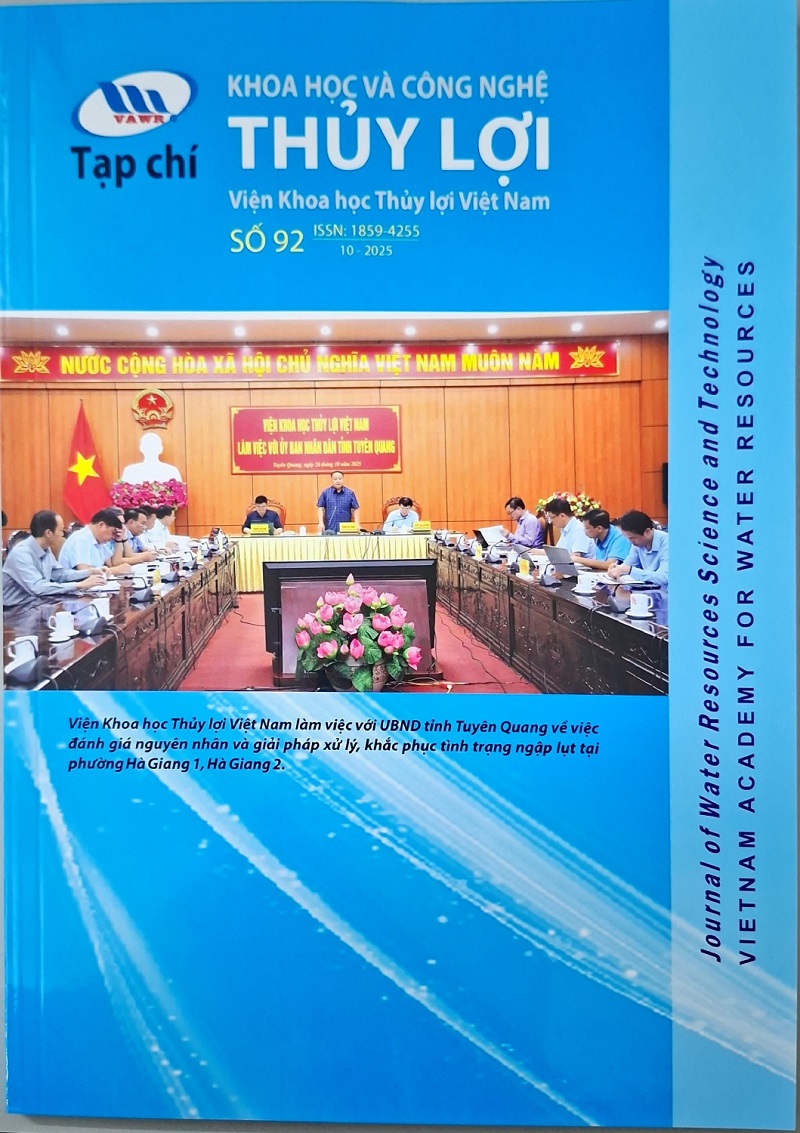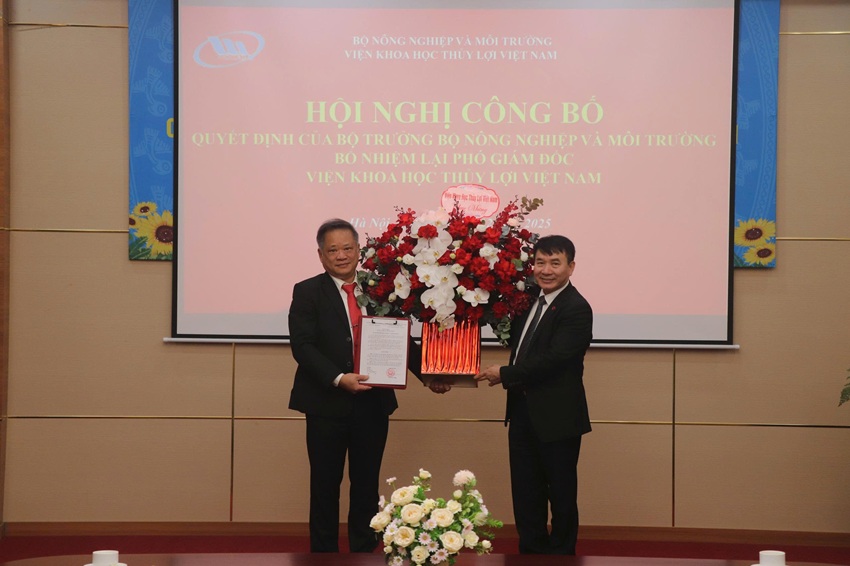Numerical Study of Partial Dam–Break Flow with Arbitrary Dam Gate Location Using VOF Method
04/04/2024Abstract:
This paper aims to evaluate the crucial influence of the width of dam gate and its position, as well as initial water depth, on the evolution of rarefaction waves on reservoirs, and of shock waves over dry flood plain areas. The large eddy simulation (LES) model and volume of fluid (VOF) method are used to simulate three objectives. Firstly, validation of the presented numerical model, and of mesh sensitivity analysis, are conducted by means of a physical test case, taken from the literature, showing very good accuracy with a small value of RMSE among all hydraulic features in the case of fine mesh. In this direction, the 3D result is also compared with the published 2D one, to prove the necessity of using a 3D model in performing dam–break flow in an early stage. The second aim is to look for insight into the following 3D hydraulic characteristics of dam–break flow: water depth, velocity hydrograph and streamline, vorticity, the q–criterion incorporated with variety of breach size, initial water stage and the reservoir outlet’s location. The influence of the dam gate’s place on peak discharge is pointed out by means of a 3D model, while the existing analytical solution is not specified. With the same conditions of initial water depth, breach width and geometry, an analytical solution gives the same peak discharge, while a 3D numerical one indicates that a symmetrical dam gate provides a greater value than does the asymmetrical case, and also a value greater than that of an analytical result.
1. Introduction
2. Numerical Mode
3. Results and Discussions
3.1. Mesh Sensitivity and Comparison 2D and 3D Numerical Solutions
3.2. Effect of Initial Water Stage, Breach Size and Position of Dam Gate on Hydraulic Characteristics
3.2.1. Dynamics and Structure of Dam–Break Wave Inside Reservoir
3.2.2. Peak Discharge of Outflow Hydrograph
4. Conclusions
References
1. Fraccarollo, L.; Toro, E.F. Experimental and numerical assessment of the shallow water model for two–dimensional dam–break type problems. J. Hydraul. Res. 1995, 33, 843–864. [CrossRef]
2. Aureli, F.; Mignosa, P.; Tomirotti, M. Numerical simulation and experimental verification of Dam–Break flows with shocks. J. Hydraul. Res. 2000, 38, 197–206. [CrossRef]
3. Proust, S.; Berni, C.; Boudou, M.; Chiaverini, A.; Dupuis, V.; André, J.-B.F.; Paquier, M.L.; Guillen–Ludena, S.; Lopez, D. Predicting the flow in the floodplains with evolving land occupations during extreme flood events (FlowRes ANR project). E3S Web Conf. 2016, 7, 04004. [CrossRef]
4. Aureli, F.; Maranzoni, A.; Mignosa, P.; Ziveri, C. Dam–Break Flows: Acquisition of Experimental Data through an Imaging Technique and 2D Numerical Modeling. J. Hydraul. Eng. 2008, 134, 1089–1101. [CrossRef]
5. Aureli, F.; Maranzoni, A.; Mignosa, P.; Ziveri, C. An image processing technique for measuring free surface of dam–break flows. Exp. Fluids 2010, 50, 665–675. [CrossRef]
6. Aureli, F.; Maranzoni, A.; Mignosa, P. A semi–analytical method for predicting the outflow hydrograph due to dam–break in natural valleys. Adv. Water Resour. 2014, 63, 38–44. [CrossRef]
7. Soares–Frazão, S.; Zech, Y. Experimental study of dam–break flow against an isolated obstacle. J. Hydraul. Res. 2007, 45, 27–36. [CrossRef]
8. Soares–Frazão, S.; Zech, Y. Dam–break flow through an idealised city. J. Hydraul. Res. 2008, 46, 648–658. [CrossRef]
9. Lobovský, L.; Botia–Vera, E.; Castellana, F.; Mas–Soler, J.; Souto–Iglesias, A. Experimental investigation of dynamic pressure loads during dam–break. J. Fluids Struct. 2014, 48, 407–434. [CrossRef]
10. Liu, S.; Liu, H. An experimental study of the maximum run–up height under dambreak flow on the initial dry–bed. J. Ocean Univ. China 2017, 16, 697–702. [CrossRef]
11. Schoklitsch, A. On waves created by dam breaches (in German). Sitz. Der Kais. Akad. Der Wiss. Wien 1917, 126, 1489–1514.
12. Waterway Experiment Station (WES). Floods resulting from suddenly breached dams. In Misc Raper no 2–374. Rep 1: Conditions of Minimum Resistance. U.S. Army Corps of Engineers: Vicksburg, MS, USA, 1960.
13. Zhang, X.; Pirker, S.; Saeedipour, M. Numerical investigation of particle motion at the steel—slag interface in continuous casting using VOF method and dynamic overset grids. Exp. Comput. Multiph. Flow 2022, 1–14. [CrossRef]
14. Zhang, H.; Li, Y.; Xiao, J.; Jordan, T. Large eddy simulation of turbulent flow using the parallel computational fluid dynamics code GASFLOW–MPI. Nucl. Eng. Technol. 2017, 49, 1310–1317. [CrossRef]
15. Yu, S.; Lim, J.; Cho, I.; Han, J. Inerting Strategy for a Demonstration–Scale Hot Cell Facility Based on Experiences from Pilot–Scale Argon Cell Facility Operation and CFD Analysis. Sci. Technol. Nucl. Install. 2021, 2021, 1–12. [CrossRef]
16. Shige–eda, M.; Akiyama, J. Numerical and Experimental Study on Two–Dimensional Flood Flows with and without Structures. J. Hydraul. Eng. 2003, 129, 817–821. [CrossRef]
17. Khankandi, F.A.; Tahershamsi, A.; Soares–Frazão, S. Experimental investigation of reservoir geometry effect on dam–break flow. J. Hydraul. Res. 2012, 50, 376–387. [CrossRef]
18. Hiền, L.T.T.; Hiền, N.T. Ðánh giá ảnh hưởng của dòng chảy vỡ ¯dập khi có và không có vật cản bằng mô hình toán hai chiều. In Processings of the Hội Nghị Cơ Học Thủy Khí Lần Thứ 21, Quy Nhon, Vietnam, 19–21 July 2018. (In Vietnamese)
19. Pilotti, M.; Tomirotti, M.; Valerio, G.; Bacchi, B. Simplified Method for the Characterization of the Hydrograph following a Sudden Partial Dam–break. J. Hydraul. Eng. 2010, 136, 693–704. [CrossRef]
20. Ozmen–Cagatay, H.; Kocaman, S. Dam–break flows during initial stage using SWE and RANS approaches. J. Hydraul. Res. 2010, 48, 603–611. [CrossRef]
21. Hien, L.T.T.; Van Chien, N. Investigate Impact Force of Dam–Break Flow against Structures by Both 2D and 3D Numerical Simulations. Water 2021, 13, 344. [CrossRef]
22. Aureli, F.; Dazzi, A.; Maranzoni, A.; Mignosa, P.; Vacondio, R. Experimental and numerical evaluation of the force due to the impact of a dam–break wave on a structure. Adv. Water Resour 2015, 76, 29–42. [CrossRef]
23. Larocque, L.A.; Imran, J.; Chaudhry, M.H. 3D numerical simulation of partial breach dam–break flow using the LES and k– turbulence models. J. Hydraul. Res. 2013, 51, 145–157. [CrossRef]
24. Biscarini, C.; Di Francesco, S.; Manciola, P. CFD modelling approach for dam–break flow studies. Hydrol. Earth Syst. Sci. Discuss. 2009, 6, 6759–6793. [CrossRef]
25. Yang, S.; Yang, W.; Qin, S.; Li, Q.; Yang, B. Numerical study on characteristics of dam–break wave. Ocean Eng. 2018, 159, 358–371. [CrossRef]
26. Saghi, H.; Lakzian, E. Effects of using obstacles on the dam–break flow based on entropy generation analysis. Eur. Phys. J. Plus 2019, 134, 237. [CrossRef]
27. Khoshkonesh, A.; Nsom, B.; Gohari, S.; Banejad, H. A comprehensive study on dam–break flow over dry and wet beds. Ocean Eng. 2019, 188, 106279. [CrossRef]
28. Khoshkonesh, A.; Nsom, B.; Bahmanpouri, F.; Dehrashid, F.A.; Adeli, A. Numerical Study of the Dynamics and Structure of a Partial Dam–Break Flow Using the VOF Method. Water Resour. Manag. 2021, 35, 1513–1528. [CrossRef]
29. Hu, H.; Zhang, J.; Li, T.; Yang, J. A simplified mathematical model for the dam–breach hydrograph for three reservoir geometries following a sudden full dam–break. Nat. Hazards 2020, 102.3, 1515–1540. [CrossRef]
30. Tsakiris, G.; Spiliotis, M. Dam– Breach Hydrograph Modelling: An Innovative Semi– Analytical Approach. Water Resour. Manag. 2012, 27, 1751–1762. [CrossRef]
31. Kaurav, R.; Mohapatra, P.K. Studying the Peak Discharge through a Planar Dam Breach. J. Hydraul. Eng. 2019, 145, 06019010. [CrossRef]
32. Lee, K.-H. Simulation of Dam–Breach Outflow Hydrographs Using Water Level Variations. Water Resour. Manag. 2019, 33, 3781–3797. [CrossRef]
33. Flow–3D, Version 12.0; User Manual; Flow Science Inc.: Santa Fe, NM, USA, 2020.
34. Hirt, C.; Nichols, B. Volume of fluid (VOF) method for the dynamics of free boundaries. J. Comput. Phys. 1985, 39, 201–225. [CrossRef]
35. Ketabdari, M.J.; Saghi, H. Large Eddy Simulation of Laminar and Turbulent Flow on Collocated and Staggered Grids. ISRN Mech. Eng. 2011, 2011, 1–13. [CrossRef]
36. Smagorinsky, J. General circulation experiments with the primitive equations. Mon. Wea. Rev. 1963, 91, 99–164. [CrossRef]
——————————————————————————————————————
► See detail: Numerical Study of Partial Dam–Break Flow with Arbitrary Dam Gate Location Using VOF Method
Thi Thu Hien Le 1,* and Van Chien Nguyen 2
1 Faculty of Water Resources Engineering, Thuyloi University, 175 Tay Son, Dong Da, Hanoi 116705, Vietnam
2 Hydraulic Construction Institute, 3/95 Chua Boc, Dong Da, Hanoi 116705, Vietnam; chiennv131@wru.vn
* Correspondence: lethuhien.thuyluc@tlu.edu.vn; Tel.: +84-9855-20-058
Appl. Sci. 2022, 12, 3884. https://www.mdpi.com/journal/applsci
Ý kiến góp ý:









